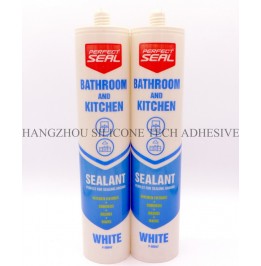Accidental exposure of the eyes to sealants during construction, home repairs, or crafting projects can cause severe discomfort and potential long-term damage. Quick and proper action is critical to minimizing harm and preserving vision. Understanding the steps to take immediately after such an incident ensures safer outcomes.

When sealant comes into contact with the eyes, time is of the essence. Move to a clean, well-lit area with access to running water or an emergency eyewash station. Do not rub the eyes, as this can spread the chemical and worsen abrasions or chemical burns. Instead, tilt the head forward to prevent the sealant from draining into the throat or other parts of the face.
Begin rinsing the affected eye(s) with lukewarm water for at least 15–20 minutes. Use a gentle stream from a faucet, showerhead, or eyewash bottle. If using a sink, ensure the water pressure is moderate to avoid forcing the sealant deeper into the eye. Keep the eyelids open with clean fingers to ensure thorough flushing of all surfaces, including under the eyelids.
For individuals wearing contact lenses, do not attempt to remove them during rinsing. The lenses may trap the chemical, but removing them abruptly could scratch the cornea. Continue rinsing until medical help arrives, and inform healthcare providers about the presence of contacts.
After initial rinsing, observe the eyes for persistent symptoms. Common signs of chemical exposure include redness, tearing, blurred vision, sensitivity to light, or a burning sensation. Mild irritation may resolve with continued rinsing, but severe symptoms demand urgent medical attention.
If the sealant contains solvents, acids, or alkalis, the risk of corneal damage increases. Symptoms such as intense pain, inability to open the eye, or visible clouding of the cornea indicate a need for immediate evaluation by an eye specialist. Do not delay seeking help, as delayed treatment can lead to permanent vision loss or scarring.
For individuals with pre-existing eye conditions, such as glaucoma or dry eye syndrome, the reaction to sealant exposure may be more pronounced. Share your medical history with emergency responders to ensure tailored care. Even if symptoms seem minor, consult an ophthalmologist within 24 hours to rule out underlying damage.
After rinsing, cover the affected eye with a clean, sterile gauze pad or a non-adhesive bandage to protect it from further irritation. Avoid applying pressure, as this may exacerbate swelling. Do not use over-the-counter eye drops or ointments unless directed by a healthcare professional, as some products may interact negatively with the chemical.
Seek emergency medical care promptly, even if symptoms appear to improve. Eye doctors may perform additional flushing with specialized solutions or administer topical anesthetics to ease pain during examination. They will also check for corneal abrasions, ulcers, or chemical burns using a slit lamp biomicroscope.
Follow-up appointments are crucial to monitor healing and prevent complications. The eye may remain sensitive for several days, so avoid wearing contact lenses, makeup, or engaging in activities that expose the eyes to dust or wind. Use artificial tears as prescribed to keep the eyes lubricated and reduce discomfort.
To reduce the risk of sealant-related eye injuries, prioritize preventive measures during projects. Wear safety goggles or face shields that meet ANSI Z87.1 standards, as these provide full coverage against splashes and airborne particles. Ensure the goggles fit snugly without gaps around the edges.
Work in a controlled environment with adequate ventilation to minimize airborne sealant droplets. Keep sealant containers closed when not in use, and avoid pouring or mixing chemicals near the face. If using aerosol sealants, stand upwind to prevent inhalation or eye exposure.
Educate household members or coworkers about the importance of eye protection, especially in shared workspaces. Store sealants and related tools out of reach of children. By integrating safety protocols into daily routines, individuals can significantly lower the likelihood of eye injuries.
Copyright 2019 by Hangzhou Silicone Tech Adhesive Co., Ltd. All rights reserved.
Bathroom Sealant | Acrylic Sealant | Dow Corning 795 | Aquarium Sealant | Dow Corning 732 | Clear Silicone Sealant | Polysulfide Sealant | Glazing Sealant | Mirror Sealant | IG Sealant
Powered by Onepound